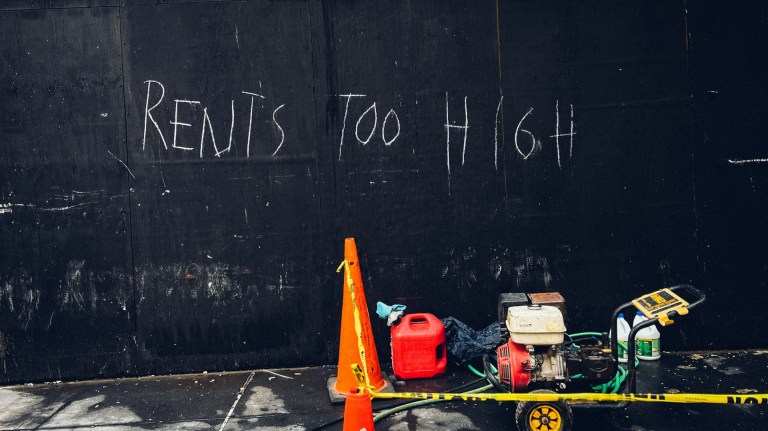This year, consolidation has continued with Barratt Developments mounting a successful £2.5 billion bid to buy Redrow; and Bellway making a £700m offer for Crest Nicholson that its board accepted only 48 hours after Reeves’ speech. This means that the number of companies accounting for more than half of all private sector housebuilding is set to fall from 10 at the start of the decade to six: Taylor Wimpey, Persimmon, Barratt Redrow, Vistry, Bellway and Berkeley.
The Competition and Markets Authority (CMA) is conducting a preliminary inquiry into Barratt’s takeover of Redrow to establish if it could result in “a substantial lessening of competition”. If it decides there is a case to answer, it will appoint independent experts to investigate further.
In their joint statement announcing the deal, Barratt and Redrow argued that it would improve shareholder returns by delivering £90 million of ongoing savings annually in procurement and through a “rationalisation of divisional and central functions”.
Barratt CEO David Thomas, who will lead the combined company to be known as Barratt Redrow said that the group would bring a “full geographical footprint across the UK”, with Barratt Homes catering to first-time buyers, its David Wilson brand building larger homes, and Redrow serving premium purchases.
The combined group will have capacity to build “in excess” of 22,000 homes a year.
A spokesperson for Bellway, meanwhile, is reported to have said: “The board of Bellway believes there is compelling strategic and financial rationale for a combination of Bellway and Crest Nicholson which would bring together the strength of each business with complementary brands.”
Advertising helps fund Big Issue’s mission to end poverty
It’s not unusual for company executives to make lofty claims, but industry analysts are generally more sceptical. Aynsley Lammin of Investec told Big Issue that “the economies of scale are arguably limited”.
He said there would be some gains from “better purchasing terms, selling with more complementary brands, standardised product and the acquisition of more land” but not many in build costs because sites operate as separate local businesses.
Dr Abi O’Connor, a researcher at the New Economics Foundation, is concerned about the power a handful of big housebuilders would wield. She said: “A few large for-profit businesses having a monopoly over any sector is problematic as it makes space for a lack of accountability.
“The reliance on the private sector to solve the housing crisis is deeply troubling. Fundamentally – and by their own admission – they are there to make profit but that does not necessarily ensure people live in safe, affordable and accessible homes.”
As if to underline that point, a new player in the housebuilding market led by Jeff Fairburn, who left Persimmon after being paid a controversial £75m bonus, has run into trouble over the potential cost of post-Grenfell fire safety remedial work. Viva Midco, which bought Avant Homes in 2021, revealed in accounts filed two weeks ago that its subsidiary had underestimated by £51.4m the cost of ensuring that homes it had built were safe.
The company’s auditors, KPMG, warned that there was now “significant doubt” about its “ability to continue as a going concern” because this was dependent on a relaxation of the terms of its borrowings and a renegotiation of its reimbursements to the government’s Building Safety Fund, potentially presenting the housing secretary, Angela Rayner, with a tricky decision.
Advertising helps fund Big Issue’s mission to end poverty
Crest Nicholson’s directors must, meanwhile, have been relieved. They had avoided being embroiled in Fairburn’s latest scandal by rejecting a merger overture from Avant Homes only a week before its existential troubles emerged – opting instead for the one from Bellway.
But the wider and more important question is: how will these inter-connected sagas impact Labour’s grand plan for 300,000 new homes a year? Labour’s manifesto is conveniently ambiguous about the geography, saying that it will “get Britain building again, creating jobs across England”. And in referring to “new homes”, it means house splits and office-to-residential conversions as well as new build.
This ambiguity was probably no accident given the scale of the challenge. The private sector started construction in England on only 116,290 homes in 2023, a fall of 18% on the previous year. If housing association and local authority starts are added and Scotland and Wales are included, the total for new-build starts last year was 171,693.
Even allowing for around 75,000 house splits and office conversions, the total still fell well short of the level Labour hopes to achieve. And, to make matters worse, all the major housebuilders are reporting fewer starts in the first half of this year as high interest rates continue to take their toll on people’s ability to buy.
The premise of Labour’s policy is that the planning system is constraining the supply of land for new build, but this flies in the face of the fact that developers have vast land banks, much of it with planning already granted.
Research by Big Issue last year found that the land held by the top eight housebuilders alone had soared to 918,823 plots, an increase of 49% on 2018 and enough to keep them going until around 2040 at their current output. But the reality is that housebuilders only develop the land they hold when they can maximise their profit.
Advertising helps fund Big Issue’s mission to end poverty
Local authority and housing association leaders say Labour’s housebuilding target cannot be achieved without public investment in social housing. In a letter to Rayner, the National Housing Federation and the Local Government Association have called for “a long-term plan for new and existing social homes, underpinned by a fair and sustainable financial model developed alongside councils and housing associations.”
Dr O’Connor argues that reliance by successive governments on the private sector has led us to this crisis and asks why Labour is “recycling this approach” if it’s the party of change. Pointing to earlier Labour achievements, she says: “The economy was in tatters in the postwar period and yet the Attlee government built good quality social housing en masse. And that’s what we need now for the 1.6 million households on the social housing waiting list.”
The corporate empire-building, controversial bonuses and questionable accounting we have been seeing in private sector housebuilding were also hallmarks of the build-up to the banking crash. History may not repeat itself, but why risk a farce with something as vital housing?
Steve Howell is an author and journalist
Do you have a story to tell or opinions to share about this? Get in touch and tell us more. Big Issue exists to give homeless and marginalised people the opportunity to earn an income. To support our work buy a copy of the magazine or get the app from the App Store or Google Play.










